The PolarTREC Field Experience
The Dry Valleys Ecosystem project (a Long Term Ecological Research program - LTER) has been a continuous line of research since the inception of the McMurdo Dry Valley LTER since 1992. This project seeks to test hypotheses regarding the response of Antarctic biotic communities to changes in climatic conditions over time. I participated in the 30th year of this program as a part of the soils team. Our team, C-507, is known as the “Wormherders” for our worm with soil arthropods- specifically on the nematodes which make up the bulk of the soil biodiversity in the Dry Valleys.
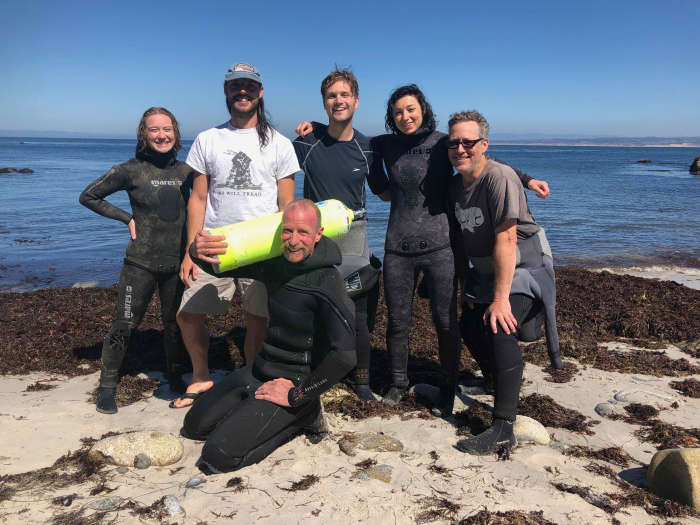
Our team is led by genetic evolutionary biologist, Dr. Byron Adams from Brigham Young University (BYU). Dr. Adams has been involved in Antarctic research for over 2 decades. Sharing the administrative and scientific leadership is Dr. John “JEB” Barret of Virginia Tech (VT) university who specializes in the effects of climate variation on ecological communities. Our lab manager, Jesse Jorna and graduate student Abigail Borgmeir, both from BYU, were pursuing graduate research on soil communities while on ice. Two graduate students from VT, Sarah Powers and Meredith Snyder, conducted the bulk of the geochemical tests on our soil samples while simultaneously conducting research for their own projects. Rounding out the team was Ariel Waldman, a former McMurdo artist in residence, who worked in the field and soils lab with us while also developing a series of short documentary films investigating the juxtaposition of micro and macro scale in ecosystems.
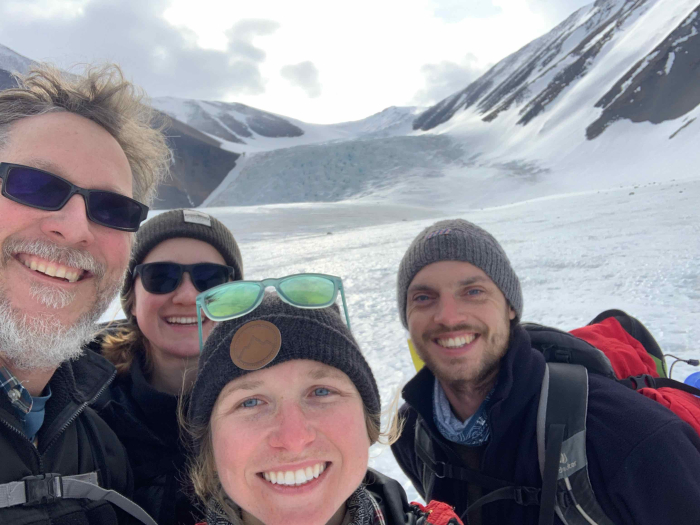
The Importance of Educator/Researcher Collaboration
There are thousands of science teachers out there, making a difference everyday, connecting students, parents, communities and businesses with science education. We work on for years at a time, often becoming more and more tenuously connected to the original science experiences that motivated us to pursue knowledge in the first place. My PolarTREC experience actually started with a collaborative project involving a former PolarTREC teacher. A colleague and I were looking for ways to connect students with real world data and foster their use of that data to become a part of the science process themselves.
Kevin Dickerson and I met at a polar science education project called Polar Sci-ICE where we were doing just that. Working on this project allowed us to cross-pollinate many amazing ideas about science education. When I found out “K-Dog” had been selected to participate in PolarTREC, I felt that I had just become friends with a celebrity. My classes and I followed his journey with the Wormherders and it inspired me to try the same thing.
Through his journals, I felt like I was a part of the trip and then I began going through the experiences of other PolarTRECers. Later that year at a conference I had a chance to catch up with the newly returned Antarctic scientist and I picked his brain about the very things I am writing about here- How to develop a collaborative relationship between teachers and researchers.
When I was selected to work with the Wormherder team myself, I began reading up on the literature looking through the published data and thinking about how it might be of use to my 7-8th grade level classes. Dr. Adams and the rest of the team have worked with me over the last few months to understand the science and think about the connections with our ecosystems at home.
Students in a science class in St. Louis can have many quality experiences with scientists. We work with several over the course of a middle school loop. The big difference with PolarTREC is the level of immersion. The science and scientists bring some of the most unique and fascinating biological research imaginable to the innately curious and eager to explore adolescents.
Summary of the Science, or The Science Explained
The terrestrial ecosystems of the McMurdo Dry Valleys (MDV) are very simple, relative to most of the planet. They are very slow moving and low in productivity. The lack of moisture, heat, abundant autotrophs and certain nutrients limit the quantity and diversity of biotic communities. There are only a few taxa in any given sample of MDV soil whereas a sample from Missouri might contain hundreds. These factors first gave Anarctica the reputation as lifeless. At first glance you see no vertebrates, foliage, pollen, or soil organic matter.
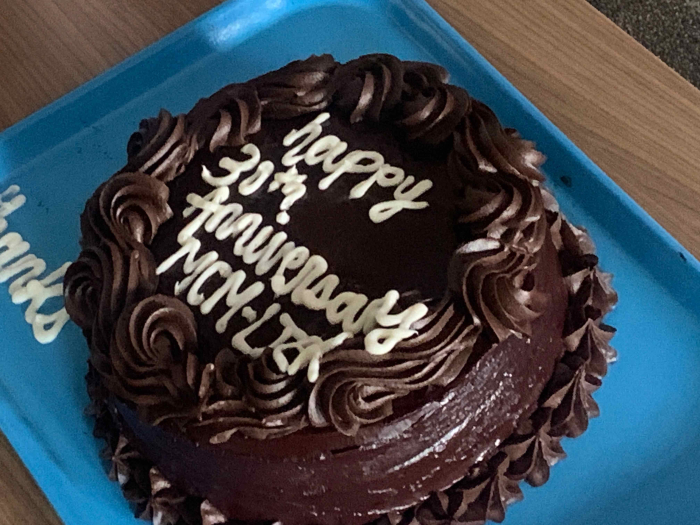
Looking beneath the surfaces (soil, lake, ice) what we have found is the perfect place to study the effects of climate variation on ecosystems. The low number of species and the slow rate of growth and reproduction are a boon to studying the complex interactions of a community. In the MDV there are a number of different experiments set up to look at the effects of different climatic and ecosystemic variations. These grids and transects are set up to investigate the relationship between variables such as moisture, wind, elevation, and temperature with the health and dynamics of the ecosystem.
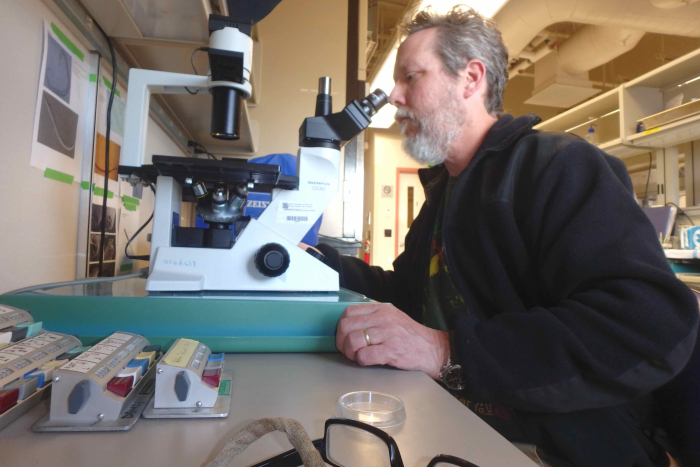
The unique nature of this place makes it the perfect laboratory. Even its remoteness leaves study areas unmolested. The perfect place to collect long term data. While we collected data to test the current hypotheses about the amplified physical connectivity due to changing climate patterns, the data can be used for future studies whose hypotheses have yet been written.
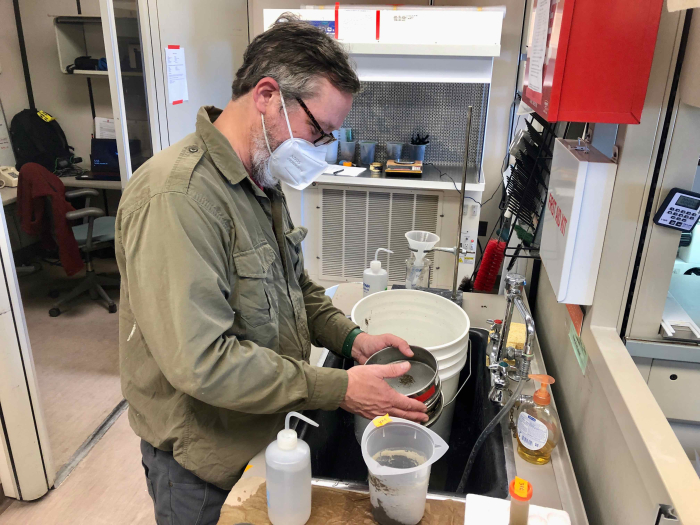
What we are seeing as a long term trend is increased wetting/melting events. They are especially evident in the lake-lined Taylor Valley. The result of this change in environment is a heterogenization of taxa within the soil communities. As soils become wetter and warmer, they lose the dedicated and endemic specialists of Antarctic soils and tend to be replaced with a more diverse but less specialized community of organisms. The dominant species are declining and the rarer taxa are increasing. This trend is parallel to the increase in lake levels throughout the valley. It has recently been observed that, while temperatures have not changed significantly, the amount of ultraviolet radiation has and is likely responsible for increased melt events. It is unclear if this is a natural cycle or anthropogenic.

Working with the Wormherders has been an amazing experience. In order to do the science here, it is essential that the team works well together, communicates, listens, learns from each other, and looks out for the team’s health. Anyone on the team was empowered to ask questions, rethink problems, elicit explanations, and propose solutions. Dr. Adams and Dr. Barett deserve the utmost praise for their inclusive and compassionate leadership. If more people knew the scientist behind the science there would be a lot more trust in our society.
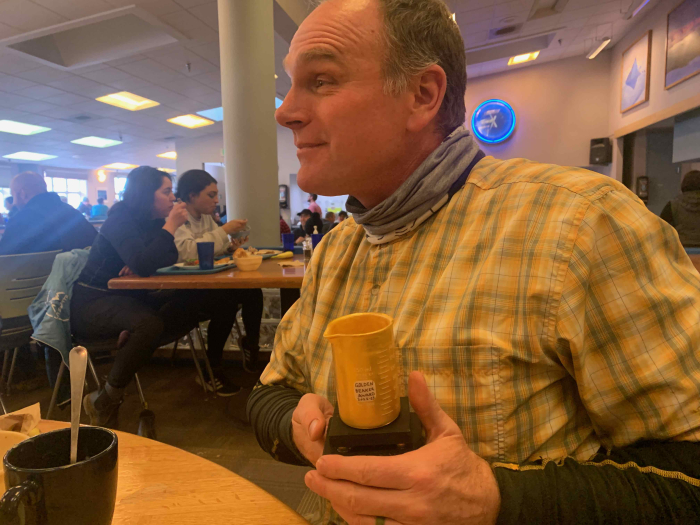
Linking PolarTREC Science to my Classroom/Audience/Institution and Community
PolarTREC has a great community of teachers and polar scientists. Under the leadership of the ARCUS staff, I have been connected since the very beginning of my work with polar science. Most experiences with grant funded programs have fizzled out over time but I have made lifelong connections with polar researchers and teaching colleagues.
I think the PolarTREC organization provides so many ways to get connected and stay connected with polar research that it has brought in a larger audience than any comparable organization I have worked with. Through my involvement, even more are getting their very first connections with polar science. Throughout my experience I thought I had a good sense of who was following along with my journals. I had comments from my students, the students of other PolarTREC alumni, and a few parents, teachers and community members. As time has passed since my return, I have heard from dozens of others outside of my bubble who followed along on my journey.
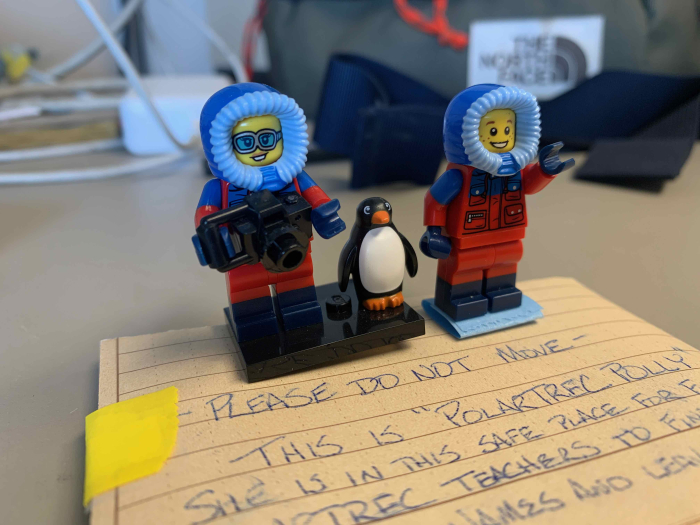
My students have had a chance to participate in several Polar Connect events throughout the years. Every year, my new students will get a chance to vicariously follow the work of polar scientists through their journals that are archived. Each time we have reached out to a past PolarTREC teacher we have been enthusiastically responded to and made to feel like a part of the program.
I will always be a PolarTREC teacher. So far I have presented to a garden organization on soils, planned a presentation at the public library and presented to two other local middle schools. Every time I speak with new people about the experience I invite them to reach out for resources and presentations. I can’t wait to be one of the PolarTREC alumni I first interacted with. Now that I have been gifted the opportunity and been privileged with the experience, I continue to look for ways to grow and learn with the polar education community.
Primary Audience and Public Impact
As a new PolarTREC alumnus, I will forever be an ambassador and proponent of polar science and education. This unique opportunity and experience has given me perspectives that are otherwise unavailable to most people. As such, I have a responsibility to share my work, knowledge, experiences, and perspectives with others.
Before my experience, I shared about the nature of the program and its connections to education with my school community through district communications, classroom lessons, and presentations within the school. During my experience I provided ongoing outreach to local schools through postcards, a Polar Connect event and regular communication with those following my journals. One of my favorites was a school that was doing a project on beekeeping around the world. The class had been learning about bees on all of the continents, except one- Antarctica. I was able to conduct interviews and produce content for their project while actually in Antarctica. This was probably the first and only beekeeping video from Antarctica!
One of my students favorite moments, and one I will also cherish forever, is my first Zoom meeting with my class back home. I did not know beforehand, but the school had arranged for media to attend who then interviewed my students for the local news. It warmed my heart to hear how they were connecting to science through their teacher and the experience of PolarTREC. In my own local education community, I have seen the impact on my school. Parents, teachers, and students have significantly more knowledge about polar science and the work that is happening through the National Science Foundation. It has been so much fun engaging with everyone on the subject of science, ecology, and the issues surrounding the health of our planet.
Expectation and Outcomes
I was well prepared for the experience as a PolarTREC teacher. Out PolarTREC staff, colleagues, alumni, and participating science teams were amazing at helping me prepare for a field season in the McMurdo Dry Valleys. One of my main expectations was to be challenged with new, difficult, and unique opportunities and this program met my expectations and more.
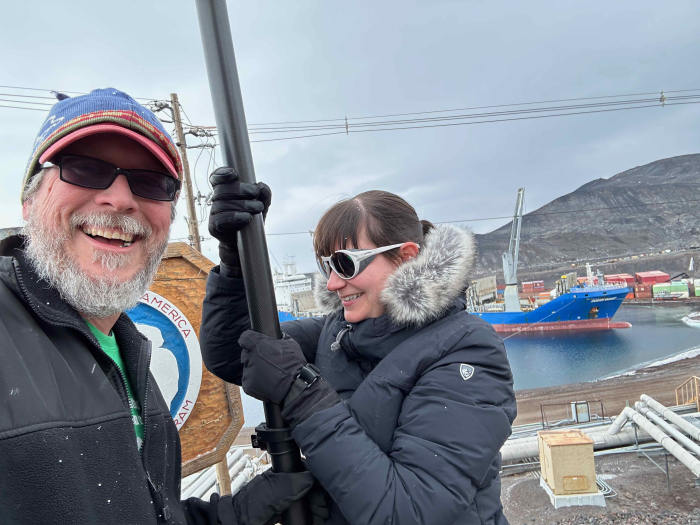
I felt comfortable working as a member of the science team. Because of the COVID situation, the Wormherder team had to work exceptionally hard to get a spot for me on their Antarctic team. Byron and I were in regular communication on the status and spots for people in McMurdo. I had hopes up and hopes down over the last 3 years as the pandemic played its games with our science and educational objectives. When a spot was finalized for me, I was told that I would be an actual science team member (while squeezing in my PolarTREC duties). This meant that I would need to learn and conduct much of the science tasks and lab work along with the team. There was a lot of behind the scenes work being done to make this happen for me. I was still not sure if Dr. Adams was just pumping me up about how important my role was or not. As a PI, Dr. Adams was one of the best leaders you could imagine; looking to build on everyone’s strengths and caring for them as individuals. He is also one of the most dedicated scientists, and, from what I learned over the years waiting, a superstar within the polar science community. My role as a member of the lab and research team, in addition to an outreach educator, was an exciting pressure to be under during the lead up and actual field experience.
In preparing for PolarTREC, we learned about our communication and outreach responsibilities. Because every position was different, we did not spend much time discussing the science responsibilities. What I found out was that I hit the science jackpot. As soon as we arrived in McMurdo I was trained and put to work in the lab. I learned all the processes for sampling, extracting, and analyzing soil samples. I was able to work the schedule of a Wormherder- many days in the lab from 8 am to 11 pm. I have worked in science labs before but never with the time crunch of a short season, where everything had to be done. Everything that had to be done was compounded by the backlog of previous, COVID-shortened seasons.
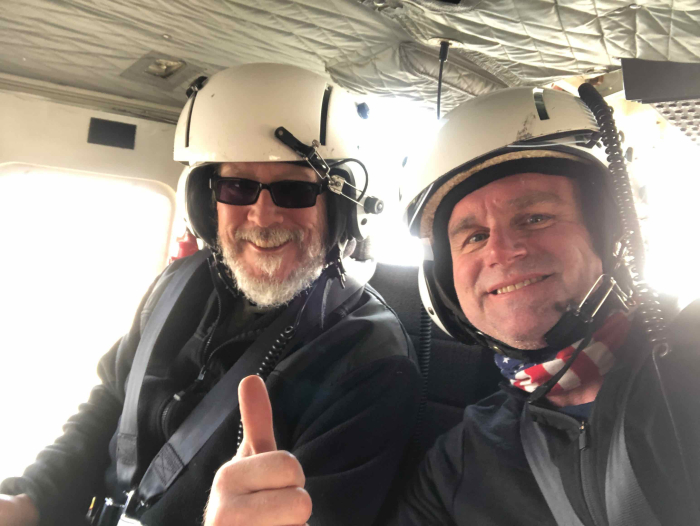
I loved every minute of it. One major outcome for me, and one that I have shared more than any other understanding, is SCIENTISTS WORK HARD! Even on days where I was putting in my journal time into the wee hours of the night, our PIs would still be at their desks writing new grants and completing papers. Their work and dedication was truly inspiring.
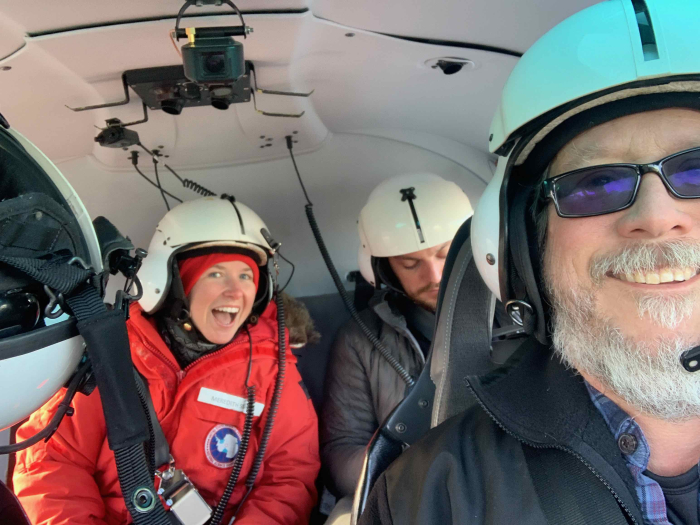
The community of learning in all of the teams is something I will continue to aspire to in my science classes. I remember being so scared of making a mistake with a soil sample. If I messed it up there was no other sample. These samples were from some of the most remote, inaccessible locations on the planet. One day I was sitting next to the lab manager putting samples into cryotubes for storage and shipment back to the US. I had done this job quite a bit and knew there was a risk of confusing the clean water with a bleach rinse. He accidentally used the wrong pipette, putting bleach into the sample. What would he do? Cover his mistake? Try to repair it and move on? I know the right thing to do is identify the mistake and note it in the data, but the pressure to do everything right in science feels so strong. Well, a real scientist calmly acknowledges what happened. They report the mistake. Doing the right thing was always an important value and empowered everyone else to be the best scientists they can be but also acknowledge our mistakes. When it was reported it was handled so matter-of-factly. He then discussed the mistake with his team and they improved the process to reduce the chance that it would happen in the future. Scientists have a growth mindset.
An outcome or enduring understanding about scientists is how much they love their work and the pursuit of knowledge. No matter the hours, the conditions, and the costs, the scientists and support staff of the programs worked to “get the science done”. They are caring individuals who have a shared sense of success. This should be a model of success for all of us. I am really proud to have been able to work with the Wormherders and internalized these understandings.
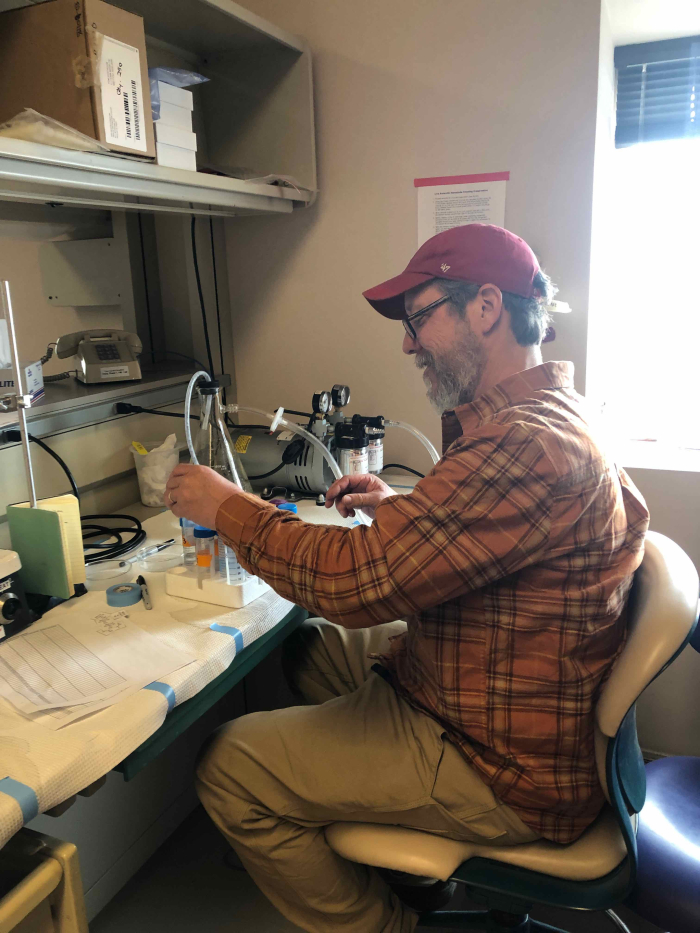
Further Education and Outreach Opportunities
As I settle back into the post-ice experience, I am working with other local schools to give presentations on soil organisms and Antarctic science. I have several planned presentations with other schools and the local library. I even presented to my local community garden on the soils of Antarctica- although most members were more interested in the journey and experience itself.
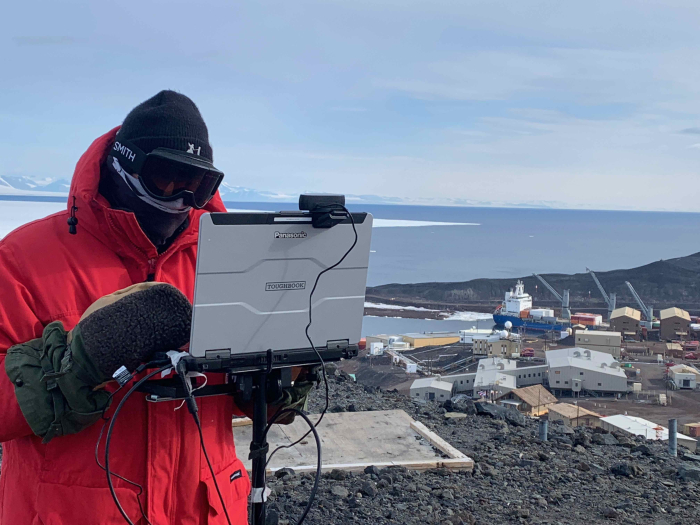
Through our Experiential Education organization, our district communications office, and even my principal’s network of statewide administrators, I have connected with hundreds of people who now know me as a resource. This spring I am reaching out to connect with local K-12 teachers in nearby schools for education programs. Even in this hectic last part of the school year, I have 8 presentations scheduled already.
As a teacher, I am always developing and revising curriculum. The PolarTREC experience has put the importance of our poles at the forefront of the topics driving my content. Beyond the rush of an ongoing school year and the post-ice excitement/enthusiasm, I plan to see a slow maturation and lasting impact from the experience as I continue to work with other teachers and scientists to bring the topics and issues of polar science to the entire community.
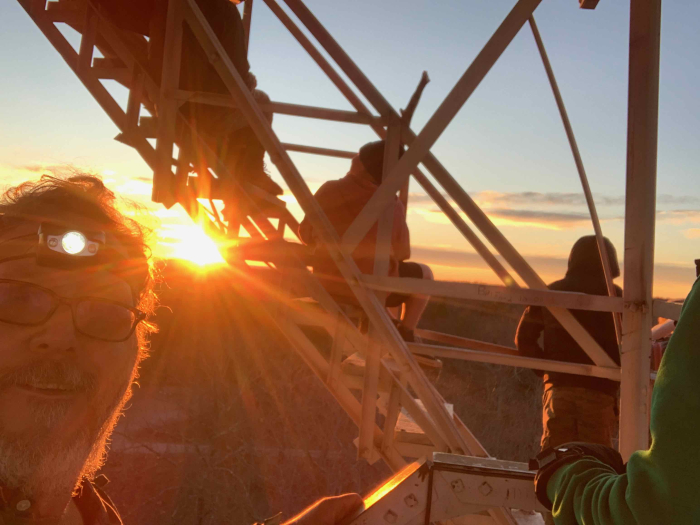
| Attachment | Size |
|---|---|
| Download Report (PDF)5.95 MB | 5.95 MB |
This program is supported by the National Science Foundation. Any opinions, findings, and conclusions or recommendations expressed by this program are those of the PIs and coordinating team, and do not necessarily reflect the views of the National Science Foundation.
